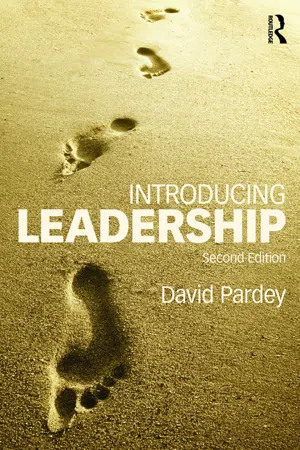Cultural Values
Cultural values refer to the shared beliefs, attitudes, and behaviors that are characteristic of a particular group or society. In a business context, understanding cultural values is crucial for effective communication, decision-making, and building relationships with employees, customers, and partners. Recognizing and respecting cultural values can lead to greater success and harmony in business interactions.
6 Key excerpts on "Cultural Values"
- eBook - ePub
Introduction to Human Resource Management
A Guide to HR in Practice
- Charles Leatherbarrow, Janet Fletcher(Authors)
- 2018(Publication Date)
- CIPD - Kogan Page(Publisher)
...02 Aspects of organisational culture LEARNING OBJECTIVES After studying this chapter, you should be able to: understand the concept of culture, values and norms; demonstrate an understanding of how history, corporate climate, managerial style and other factors contribute to organisation culture; recognise the importance of culture as a determinant of workplace behaviour; understand that physical culture can act as a powerful means of creating identity within organisations; understand and be able to take account of your organisation’s culture in your role as an HR practitioner. What is culture? In 1871, the anthropologist Edward Tylor defined culture as ‘knowledge, belief, art, morals, law, custom and any other capabilities and habits acquired through membership of society’. In a narrower sense the term is used to describe the differences between one society and another. In this context, according to Giddens: A culture is an all-pervasive system of beliefs and behaviours transmitted socially. Specifically, it consists of the sets of values and norms or rules held by a society, together with its material expressions. (Giddens, 1989, p30) KEY CONCEPT: VALUES A value is an ideal to which an individual subscribes. Values are learnt during the socialisation process. Individuals adopt them from the values of the society to which they belong; values have an influence on behaviour. Cultural Values, as defined by Schwartz (2007, p25): Represent the implicitly or explicitly shared abstract ideas about what is good, right, and desirable in a society (Williams, 1970)...
- eBook - ePub
- Roger Gill(Author)
- 2011(Publication Date)
- SAGE Publications Ltd(Publisher)
...They must behave and act with responsibility and conviction in doing so. We discuss why and how they do so in this chapter. • Shared values in part will determine corporate and national cultures. Leadership has a crucial role in shaping the culture of an organization and a nation. We consider the characteristics of corporate cultures, both advantageous and dysfunctional. A case study of Goldman Sachs provides an opportunity to consider the nature of the values that are associated with a strong, positive corporate culture. • Leadership sans frontières poses another leadership challenge. Cross-cultural and multicultural situations call for leadership behaviour that is a mix of universal principles and cultural empathy. We explore what is universal across cultures and what is culture-bound. The challenge to organizational leadership is to develop a corporate culture that incorporates those human values that are universal, recognizes the diversity of other values across national cultures, and reconciles those values within a corporate culture that supports the organization’s vision and strategies. What are Values? Effective leaders will identify, display, promote and reinforce shared values that will inform and support the vision, purpose and strategies. Values are principles or standards that are considered to be important or beneficial. 1 We evaluate aspects of our existence – objects, behaviour, events, activities, motives, intentions, goals and outcomes – on the basis of our values. 2 ‘Moral’ values are values that are regarded as ‘good’ as opposed to ‘bad’, ‘right’ as opposed to ‘wrong’. These are the basis for a system of ethics and professionalism...
- eBook - ePub
- Donald Munro, John F. Schumaker, Stuart C. Carr, Donald Munro, John F. Schumaker, Stuart C. Carr(Authors)
- 2014(Publication Date)
- Routledge(Publisher)
...Government leaders base decisions about whether to conduct nuclear tests, for example, on the cultural importance of values like national security, power, and world peace. Moreover, leaders invoke such values to justify their actions. When parents, teachers, bosses, and commanding officers punish or reward those for whom they are responsible, they guide and justify their behavior by calling upon the values that define the goals of families, schools, workplaces, and armies. The explicit and implicit value emphases that characterize a culture are imparted to societal members through everyday exposure to customs, laws, norms, scripts, and practices that are shaped by the Cultural Values (Bourdieu, 1972 ; Markus & Kitayama, 1994). Cultural Values are built into people's mental programming, often without their conscious awareness, as they adapt to life in the societal institutions. But societies are not homogeneous. They consist of numerous groups or categories that may have somewhat different sets of value priorities and ways of seeing the world—different subcultures. There are ethnic, religious, and occupational groups, for example, and generational, class, and gender categories. People are usually members of a number of these groups and categories at the same time. So they are likely to carry with them multiple and possibly contradictory mental programs that can complicate their decision making. Measuring Cultural Values Ideally, the subcultures of ethnic, regional, and other groups within nations should be studied. Practically, however, the vast majority of cross-cultural work on values has examined national differences. National boundaries do not necessarily correspond to the boundaries of organically developed, relatively homogeneous societies with a shared culture, but there are strong forces toward integration in nations that have existed for some time (Hofstede, 1991, p. 12)...
- eBook - ePub
- David Pardey(Author)
- 2016(Publication Date)
- Routledge(Publisher)
...4 Why culture, values and trust matter Ultimately it is your behaviour – the things that you do – that determines your success as a leader. However, there are a number of factors that will shape the way that the people you lead respond to you, of which the three critical ones are the organisation’s culture, the values that permeate it and the levels of trust that exist within it. In this chapter we will explore these three, looking at what they are, what determines them and the effect they have on the way people respond to their leaders. In the third section of Introducing Leadership we return to them, especially trust. Culture I have already described culture as ‘the way things are around here’, but a more formal definition would be to describe it as the set of values and beliefs through which people ascribe meaning to events. Edgar Schein, who worked at the Sloane School of Management at Massachusetts Institute of Technology (MIT), who has been one of the most influential figures in our understanding of organisational culture, has described culture as: the pattern of basic assumptions that the group has invented, discovered or developed in learning to cope with its problems of external adaptation and internal integration, and that has worked well enough to be considered valid and, therefore, to be taught to new members as the correct way to perceive, think and feel in relation to those problems. (‘What you need to know about organisational culture’, Training and Development Journal, January 1986) Schein went on to describe three levels of culture: 1. artefacts and behaviours 2. espoused values 3. assumptions. Culture is ‘like air, invisible but pervasive’ (according to a neat little comment in a report written for the Merseyside Disability Federation), hard to see but very real and significant to those who are aware of it. The artefacts and behaviours are the way that a culture manifests itself, and these are explored below...
- eBook - ePub
Managing Corporate Values in Diverse National Cultures
The Challenge of Differences
- Philippe d'Iribarne(Author)
- 2012(Publication Date)
- Routledge(Publisher)
...5 Values materialize in harmony with individual cultures We have observed several facets of the encounter between corporate values and a diversity of cultures. Yet, at the end of our journey, how can we gain insight into the way this encounter operates? To what extent have we found truly common values, which would suggest that they transcend cultural differences? And how does this common core of values take shape in each culture? To answer these questions, we must first of all dispel a misunderstanding tied to the fact that a culture is most often identified with a set of values. We shall then return to the text in which Lafarge sets out its corporate vision and see that it closely interlinks three different registers: the invocation of universal values, the Group’s choice to give priority to some of these values, and a manner of materializing these values that is specific to the Western world. Drawing a distinction between these registers will help us to identify how universal and cultural aspects have been intertwined in the company’s approach. We shall then broaden our topic by taking a look first at life in multinational companies in general and then at how the universality-culture nexus operates on a wider scale. Values and cultures In its most widespread representation, culture is assimilated to a set of values that themselves shape practice. From this angle, it is difficult to understand how people can share the same values and yet, at the same time, behave differently within cultures that are themselves vastly different. The fact is that values and culture do not belong to the same sphere. 1 When an individual or group talks about values, their reference is an ideal or a world that they would like to see materialize. They have no need to worry about the eventual real-world difficulties involved in combining the diverse values to which they are attached...
- eBook - ePub
Hearing the Voice of the Shingo Principles
Creating Sustainable Cultures of Enterprise Excellence
- Robert Derald Miller(Author)
- 2018(Publication Date)
- Productivity Press(Publisher)
...If one of the keys to business improvement is to focus on helping people to improve their own behaviors, then self-awareness of values is key to self-improvement. This is not an endorsement for T-groups or other 60s and 70s Organizational Behavior techniques. It is however, a recommendation that an important part of transforming a corporate culture is thoughtfully creating the conditions where every associate has many opportunities to evaluate their own beliefs about how they should behave and become exposed to new thinking. Influencing personal values and behaviors is not a single event but rather the outcome of a management system that routinely presents associates with different ways to achieve great outcomes and illustrates the thinking that is required to achieve these results. The way to sustainably improve our individual approach to life and work is by learning to value the things that result in better outcomes. Our values can in fact change over time with new experiences. Values are distinctly human traits. Corporations are inanimate things and cannot possess values. Leaders of corporations, on the other hand, do have values and often express their expectations about the values they would like individuals to possess in an organization for it to be successful. These shared, usually top-down, beliefs are often referred to as “Corporate Values.” Possessing values is a distinctly human trait; corporations do not possess values but leaders often express their shared expectation that employees value specific things. These are usually called “Corporate Values.” Corporate Values Business leaders old enough to have been working during the 80s and early 90s will remember the process many of us went through of creating company mission, vision and values statements. In 1991, I was on what we called the Board of Management for a large industrial company in Denver, Colorado...





